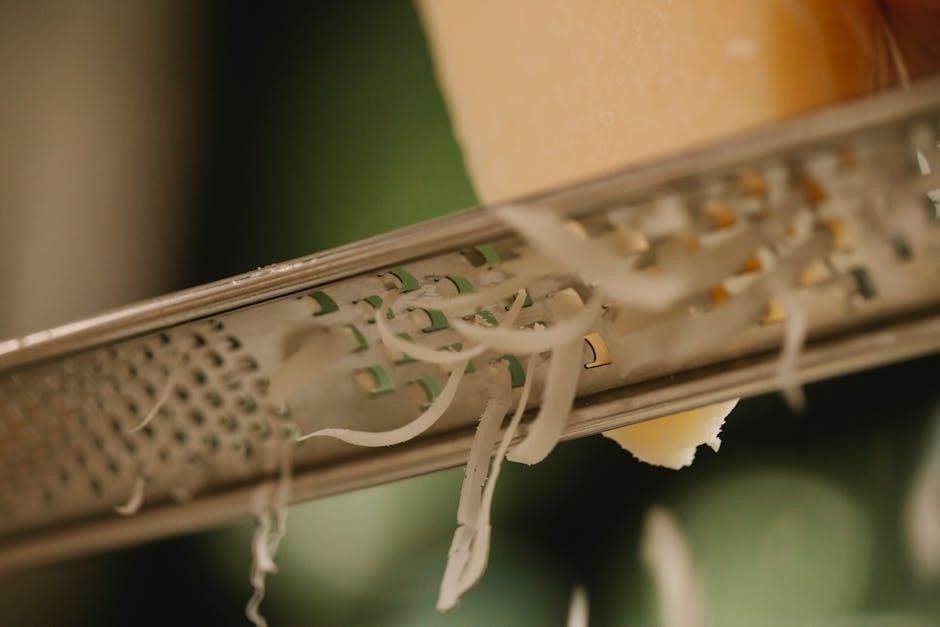Homemade metal lathe plans offer a cost-effective way to create a functional machine for precision metalworking. DIY enthusiasts can customize designs to suit their needs, using readily available materials and tools. These plans often include step-by-step guides, making it accessible for beginners. Building a metal lathe fosters creativity and self-sufficiency, allowing craftsmen to produce custom parts and tools. With proper planning and execution, homemade lathes can achieve professional-grade results, making them a valuable addition to any workshop.
Overview of DIY Metal Lathe Projects
DIY metal lathe projects allow hobbyists and craftsmen to build functional machines for precision metalworking. These plans often involve repurposing materials like steel and concrete, combined with basic tools. Projects range from simple, benchtop lathes to more complex designs with adjustable speeds and custom chucks. Many enthusiasts share detailed guides, emphasizing creativity and resourcefulness. With minimal investment, homemade lathes can achieve professional-grade results, making them a rewarding and practical addition to any workshop. These projects inspire innovation and self-sufficiency in metalworking.
Importance of Having a Metal Lathe in a Home Workshop
A metal lathe is a cornerstone for any home workshop, enabling precise metalworking tasks like turning, drilling, and threading. It allows craftsmen to create custom parts, repair machinery, and fabricate tools. Owning a lathe fosters self-sufficiency, reducing reliance on external services. For hobbyists and professionals alike, it enhances creativity and productivity. A homemade metal lathe is cost-effective, offering the same functionality as commercial models. This versatility makes it an indispensable asset for projects requiring metal manipulation, empowering makers to bring their ideas to life with precision and efficiency.
Materials and Tools Required
Building a homemade metal lathe requires materials like steel bars, alloy plates, and standard screws. Essential tools include a drill press, welder, and basic hand tools. Precision cutting tools and measuring instruments are also necessary for accurate assembly. Ensure all components are durable and aligned properly for optimal performance. Proper organization of materials and tools streamlines the construction process, helping to achieve a functional and reliable lathe. Safety gear like gloves and goggles is crucial during assembly and operation. Plan meticulously to avoid errors and ensure all parts fit seamlessly together. Regular maintenance and lubrication of moving parts will extend the lathe’s lifespan and maintain its efficiency. Start with gathering all necessary materials and tools before beginning the project to save time and reduce frustration. A well-prepared workspace enhances productivity and safety. Always refer to detailed plans for specific requirements and measurements. This careful preparation ensures a successful and satisfying DIY metal lathe project.
Essential Materials for Building a Metal Lathe
Steel bars, alloy plates, and standard screws are primary materials for constructing a metal lathe. Concrete and scrap steel can also be used for the lathe bed. Lightweight alloy plates are ideal for the frame, while steel bars provide durability for critical components like the spindle. Additional materials may include bearings, lead screws, and split nuts for smooth operation. Ensure all materials are precision-cut and properly aligned to maintain structural integrity and functionality. Using off-the-shelf components, like chucks and bearings, can simplify the process. Proper material selection is crucial for achieving a sturdy and precise homemade metal lathe.
Basic Tools Needed for Assembly and Construction
A drill press, welder, and basic hand tools like wrenches and screwdrivers are essential for assembling a metal lathe. A milling machine can be helpful for precision cuts, while a lathe itself may be needed for final spindle adjustments. Measuring tools, such as calipers and a square, ensure accuracy. Simple tools like saws and files are also necessary for shaping components. While some advanced machinery can aid in construction, basic tools are sufficient for building a functional homemade metal lathe with careful planning and execution.

Step-by-Step Assembly Guide
Begin by constructing the lathe bed, ensuring it is sturdy and aligned. Install the headstock and spindle, then attach the carriage and cross slide, checking precision and alignment throughout.
Building the Lathe Bed and Ways
The lathe bed and ways form the foundation of the machine, requiring precision and stability. Use steel bar and concrete for durability, ensuring the bed is perfectly aligned. Assemble the structure with standard screws and pins, following detailed plans to maintain accuracy. While skilled hobbyists can manage this step, some parts may need engineering expertise for optimal results. A sturdy, well-aligned bed is crucial for the lathe’s performance, supporting smooth operation and precise machining.
Constructing the Headstock and Spindle
Constructing the headstock and spindle is critical for precise metalworking. Use scrap steel and basic tools to build the headstock, ensuring it mounts securely to the lathe bed. The spindle, often crafted from 38mm shafting, must rotate smoothly. Install flange bearings for support and align components carefully. This step can be challenging but is essential for achieving accurate spindle speeds and reliable operation. Proper construction ensures the lathe’s functionality and versatility in various machining tasks.
Assembling the Carriage and Cross Slide
Assembling the carriage and cross slide involves precise alignment and secure attachment to the lathe bed. Use steel bar and concrete for durability, ensuring smooth movement. Basic tools like a drill and welder suffice for assembly. Align the cross slide accurately to the carriage, ensuring proper fitment. This step is crucial for achieving precise control over metalworking operations. Proper assembly ensures smooth, consistent movement, enhancing the lathe’s functionality and safety during use.
Key Components of a Homemade Metal Lathe
A homemade metal lathe requires a sturdy bed, precise headstock, and durable spindle. The carriage and cross slide ensure accurate metalworking. These components ensure stability and control during operations, making them essential for achieving professional-grade results in metalworking projects.
Designing and Making a 3-Jaw Chuck
Designing a 3-jaw chuck involves precision engineering to ensure even gripping of workpieces. Typically made from steel or aluminum, the chuck requires accurate machining to maintain balanced operation. The jaws, often tapered or threaded, must align perfectly with the chuck body. Assembly involves securing the jaws and ensuring smooth rotation. While challenging, homemade chucks can match commercial quality, offering cost savings and customization for specific projects. Proper alignment and material selection are critical for reliable performance in metalworking tasks.
Implementing Speed Control for the Lathe
Implementing speed control on a homemade metal lathe enhances versatility and precision. Variable spindle speeds can be achieved using a motor with a pulley system or an electronic speed controller. This allows adjustment for different materials and operations. Step-by-step guides in homemade lathe plans often include detailed instructions for integrating speed control mechanisms. Proper implementation ensures smooth operation and optimal performance for various metalworking tasks. This feature is essential for achieving professional-grade results in DIY metal lathe projects.
Additional Features and Modifications
Enhance your homemade metal lathe with features like a leadscrew and split nut mechanism for precise threading. Integrating a motor improves power and efficiency, enabling heavier workloads and smoother operations.
Adding a Leadscrew and Split Nut Mechanism
A leadscrew and split nut mechanism enhances your homemade metal lathe’s functionality, enabling precise threading and longitudinal movements. The leadscrew, typically purchased or crafted from steel, pairs with a split nut for smooth operation. This system allows for accurate feed rates and threading on workpieces. Installation involves mounting the leadscrew along the lathe bed and attaching the split nut to the carriage. Proper alignment and lubrication are crucial for optimal performance. This modification significantly improves the lathe’s versatility and precision, making it ideal for advanced projects.
Integrating a Motor for Powering the Lathe
Integrating a motor into your homemade metal lathe is essential for powering its operations. A suitable motor, often between 1/2 to 1 horsepower, can be mounted to the headstock and connected via a belt or direct drive system. Variable speed control, achieved through pulleys or electronic controllers, allows for adjustable spindle speeds. Ensure proper alignment and secure mounting to prevent vibration. This setup enables efficient and precise machining, making the lathe suitable for a wide range of metalworking tasks. Safety precautions, like emergency stop switches, are recommended for optimal control.
Resources and Plans
Find detailed homemade metal lathe plans in PDF format online, offering step-by-step guides, material lists, and assembly instructions. Books like Dave Gingery’s “The Metal Lathe” provide comprehensive insights, while websites offer downloadable blueprints for various lathe designs, catering to both beginners and experienced makers. These resources ensure a smooth construction process, helping you build a functional and precise metal lathe tailored to your workshop needs.
Recommended Books and Guides for Building a Metal Lathe
Dave Gingery’s “The Metal Lathe” is a highly recommended guide for building a homemade lathe. This book provides step-by-step instructions, covering design, materials, and construction. Additionally, online resources offer PDF plans for DIY metal lathes, including detailed blueprints and assembly guides. These resources are ideal for hobbyists and professionals alike, ensuring a successful and precise lathe-building experience. They often include tips for customization and troubleshooting, making them invaluable for both beginners and experienced craftsmen.
Downloading Detailed Homemade Metal Lathe Plans
Detailed homemade metal lathe plans in PDF format are widely available online, offering comprehensive guides for DIY enthusiasts. These plans often include step-by-step instructions, blueprints, and assembly diagrams. Websites like Tool Plans and forums provide access to downloadable resources, ensuring precise construction. Many plans are scalable, catering to both small and large projects. By downloading these guides, craftsmen can build functional metal lathes with professional-grade features, such as adjustable speed control and 3-jaw chucks, enhancing their workshop capabilities.

Safety Tips and Considerations
Always wear protective gear, ensure proper machine setup, and avoid common construction mistakes. Follow detailed assembly instructions for optimal safety and performance of your homemade metal lathe.
Best Practices for Operating a Homemade Metal Lathe
- Always wear safety goggles and gloves when operating the lathe to protect against flying debris.
- Ensure the machine is properly assembled and aligned before use to avoid vibrations or accidents;
- Start with low spindle speeds and gradually increase as needed to maintain control and prevent overheating.
- Use appropriate cutting tools and chucks for the material being worked to ensure precision and safety.
- Keep the workspace clean and well-lit to minimize hazards and improve visibility.
- Follow the operating manual or guide for specific instructions tailored to your homemade lathe design.
- Regularly inspect and maintain the lathe to ensure all parts are secure and functioning correctly.
Common Mistakes to Avoid During Construction
- Improper alignment of the lathe bed and ways can lead to inaccurate machining and vibration issues.
- Insufficient rigidity in the lathe’s structure can result in deflection during operations, affecting precision.
- Using incorrect materials for critical components may compromise durability and performance.
- Neglecting to properly secure bolts and fasteners can cause instability and safety hazards.
- Overlooking precision when machining parts can lead to misalignment and poor functionality.
- Failing to test components before final assembly can result in costly rework or unsafe conditions.
Avoiding these mistakes ensures a safer, more reliable, and precise homemade metal lathe.
Troubleshooting and Maintenance
Regularly inspect for wear on moving parts, ensure proper lubrication, and check alignment to maintain functionality. Addressing issues promptly prevents major repairs and ensures smooth operation.
Identifying and Fixing Common Issues
Common issues in homemade metal lathes include misalignment, vibration, and worn-out parts. Misalignment can be corrected by adjusting the bed and ways, while vibration may require balancing the spindle. Worn-out components, such as bearings or gears, should be replaced promptly to avoid further damage. Regular lubrication and thorough inspection help prevent these problems. Additionally, ensuring all bolts and screws are tightened securely can maintain stability and performance. These fixes ensure optimal functionality and longevity of the lathe.
Regular Maintenance for Optimal Performance
Regular maintenance is crucial for ensuring the homemade metal lathe operates smoothly. Lubricate moving parts, such as bearings and slides, to reduce friction and wear. Clean debris from the bed and ways to maintain accuracy. Check and tighten all bolts and screws periodically. Inspect the spindle and chuck for alignment issues and adjust as needed. Replace worn or damaged components promptly to prevent further damage. Proper care extends the lathe’s lifespan and ensures consistent performance for precise metalworking tasks.
Building a homemade metal lathe is a rewarding project that combines creativity with practical skills. It offers a sense of accomplishment and enhances workshop capabilities effectively.
Final Thoughts on Building a Homemade Metal Lathe
Constructing a homemade metal lathe is a fulfilling endeavor that tests creativity and mechanical aptitude. It provides a practical tool for precision metalworking, allowing craftsmen to fabricate custom components. With detailed plans and careful execution, DIY enthusiasts can create a durable and functional machine. The sense of accomplishment and cost savings make this project highly rewarding, empowering makers to expand their workshop capabilities and tackle complex projects with confidence and precision.
Encouragement for Beginners to Start Their Project
Embracing the challenge of building a homemade metal lathe can seem daunting, but it’s a rewarding journey for beginners. Starting with simple materials and tools, you’ll gain hands-on experience and confidence. Each step, from assembling the bed to crafting the spindle, builds valuable skills. Don’t hesitate to seek guidance from online communities or detailed plans. With persistence and patience, you’ll create a functional lathe, unlocking new possibilities for your workshop and fostering a lifelong passion for DIY machining.

Appendix
- Refer to Dave Gingery’s The Metal Lathe for detailed step-by-step guidance.
- Explore online forums and communities for shared DIY lathe experiences.
- Download comprehensive PDF plans for precise measurements and diagrams.
Recommended Online Communities for Support
Engage with online forums and communities dedicated to metalworking and DIY projects. These platforms offer valuable resources, tips, and support for builders of homemade metal lathes.
- Reddit: r/MachineBuilding, r/HomemadeTools for shared experiences and advice.
- Practical Machinist: Extensive discussions on lathe construction and modifications.
- YouTube Channels: Tutorial videos and project showcases for inspiration and guidance.
These communities provide feedback, troubleshooting, and encouragement for homemade metal lathe enthusiasts.
Additional Resources for Advanced Modifications
For advanced modifications, explore detailed guides and technical resources. Dave Gingery’s “The Metal Lathe” offers in-depth insights for custom builds. Downloadable plans from 04/28/2025 provide 2,878 DIY tool designs, including lathe enhancements. Video tutorials on YouTube showcase intricate modifications, such as CNC conversions and custom chucks. These resources help refine your homemade metal lathe, enabling precise machining and advanced functionality for complex projects.